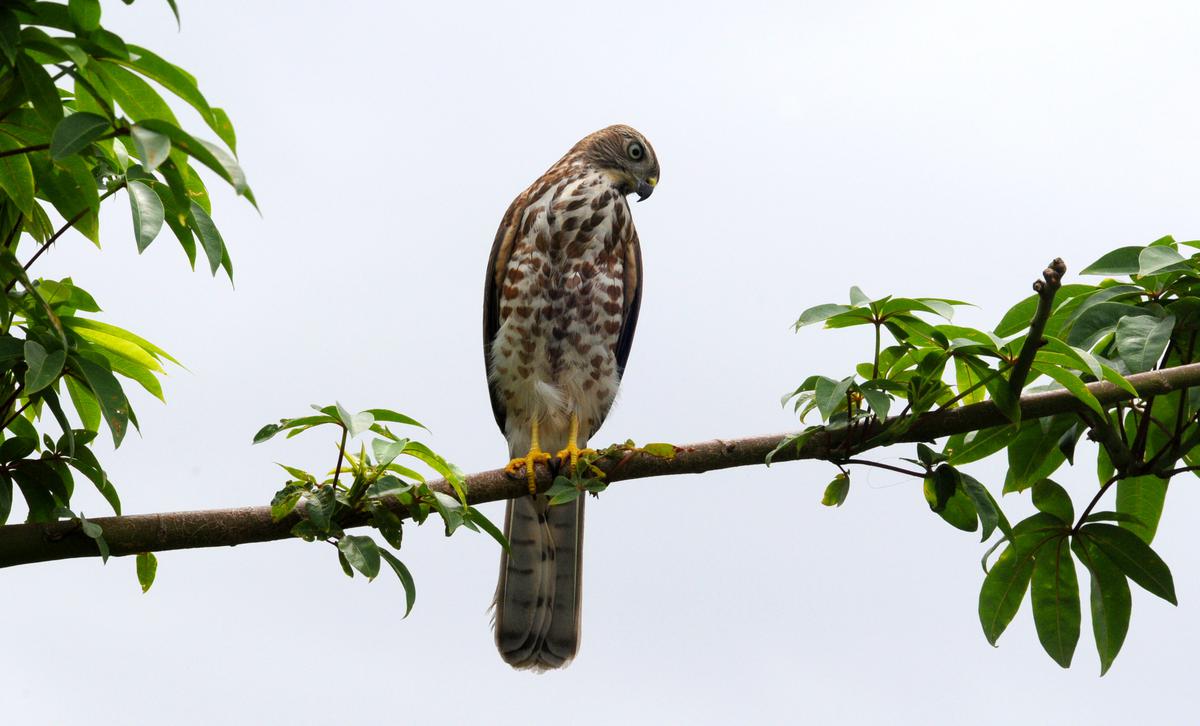
The science of why hawks are one of nature’s deadliest hunters
The Hindu
Moving in a group dilutes an individual’s risk of being attacked. This is called the confusion effect.
The sight of hundreds of thousands of bats streaming from their roost at dusk is one of nature’s great spectacles. Swarms can be so dense they resemble rising smoke at a distance. But the aerial antics of the birds of prey that hunt them are just as astonishing.
Studying these behaviours in a remote corner of the Chihuahuan Desert (which stretches from the southwest US to Mexico) has been a highlight of my almost 25-year career as a biologist studying animal flight. My team’s study was done in collaboration with bat scientist Laura Kloepper (University of New Hampshire).
Prey animals often find safety in numbers, and bats are no exception. Moving in a group dilutes an individual’s risk of being attacked. It can also confuse the predator and make it harder for them to track a target. This is called the confusion effect. Humans get disorientated in this way by large groups of objects and animals too. Swainson’s hawks tend to attack the Mexican free-tailed bats they feed on as the bats emerge in swarms from their cave. The bats fly much slower as they leave their cave compared to open airspace (they can reach speeds of nearly 100 mph if the area is clear).
My team found the hawks seemed unfazed by the confusion effect.
How do hawks steer clear of the confusion effect that bewilders us humans when watching a swarm? To answer this question, we filmed the hawks as they plunged into the stream of bats flowing from a cathedral-like cave. High-definition video cameras placed strategically around the mouth of the bat cave allowed my team to reconstruct the 3D trajectories of the hawks and the bats they attacked. But recreating a behaviour is only the first step towards understanding its mechanics. Next, my team analysed how the hawks steered their line of attack.
Also Read | Scientists reach tallest tree ever found in Amazon
We used a computer simulation approach that we had first developed in 2017 to study the attack behaviours of peregrine falcons. This method uses a set of mathematical formulae called differential equations to simulate the birds’ behaviour.

The recently concluded photo and art exhibition, Anaivarum - Echoes of Heritage: A Celebration of Past & Inclusivity by Madras Photo Bloggers, and jointly organised by the British Council, Nam Veedu Nam Oor Nam Kadhai, and the Madras Literary Society, held a panel discussion titled Sign Language as Art, focussing upon the importance of using sign language and the need for greater inclusivity in the arts.





















 Run 3 Space | Play Space Running Game
Run 3 Space | Play Space Running Game Traffic Jam 3D | Online Racing Game
Traffic Jam 3D | Online Racing Game Duck Hunt | Play Old Classic Game
Duck Hunt | Play Old Classic Game










